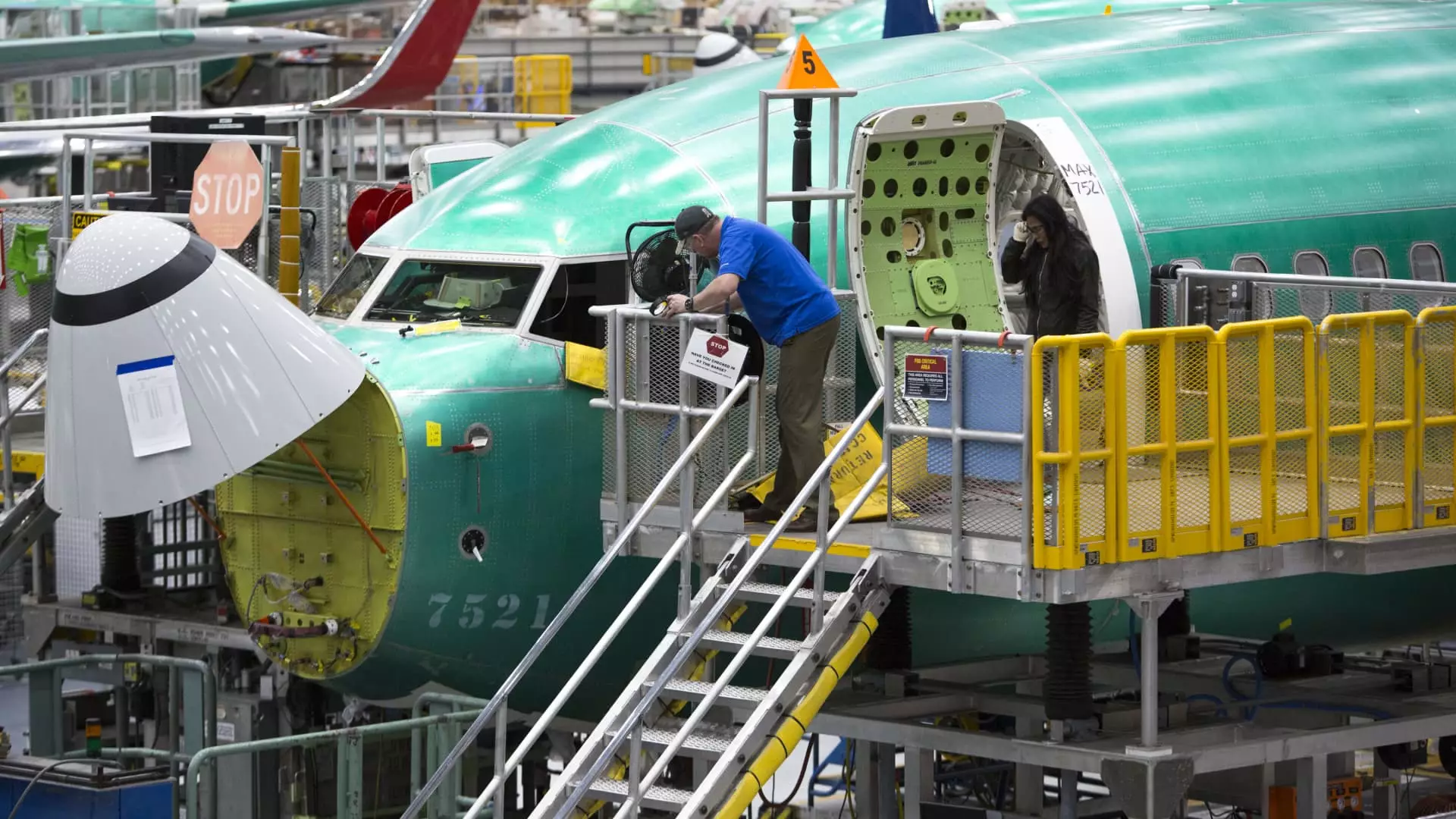As Boeing workers prepare to cast their votes on a new labor contract, the implications of this decision extend far beyond the factory floors of Renton and Everett, Washington. It’s not just a simple vote for improved wages and benefits; this decision could significantly impact Boeing’s production capabilities and future stability. The agreement, put forth by the International Association of Machinists and Aerospace Workers (IAM), includes a notable 25% wage increase and enhanced health-care provisions. The potential for a strike looms large if the vote does not favor the agreement, adding a layer of tension as Boeing attempts to rebound from a series of production issues and safety concerns.
CEO Kelly Ortberg, who took the helm a little over a month ago, finds himself navigating a turbulent sea of expectations and challenges. His recent communications with employees suggest an attempt to foster solidarity and emphasize the importance of collaboration during this pivotal moment. Ortberg’s call for unity hints at an urgency to rectify safety hiccups and production lags that have plagued the company, particularly highlighted by recent incidents like the door-panel blowout earlier in the year. The agreement could be a vital step toward recovery, but Ortberg’s leadership and ability to rally support are now under scrutiny as the vote draws nearer.
The IAM represents approximately 33,000 workers in the Seattle area and Oregon, making them a crucial component of Boeing’s workforce. Previous demands for a 40% raise showcase the frustration and determination of the employees amidst an increasingly challenging economic landscape. While the proposed 25% increase aligns with recent labor movements in various sectors, including automotive and entertainment, it may not be enough to quell discontent among staff who feel that their efforts are not being adequately recognized. Union President Jon Holden’s communications underscore the organization’s commitment to delivering the best possible outcome while acknowledging that the final choice lies in the hands of the workers.
If approved, the new contract would elevate the top pay for IAM workers at Boeing to $57.43 per hour—and with potential cost-of-living adjustments, total compensation could rise by over 42%. This substantial increase in pay aligns with the broader trend of union-negotiated raises across various industries, indicating a shift towards more aggressive bargaining tactics. Conversely, with an average annual salary increase projected from $75,608 to $106,350, the financial stakes are considerable not just for the workers but for Boeing as well. A rejection of the contract could lead to a significant work stoppage, disrupting production and exacerbating existing issues, creating a cycle of setbacks for the company.
The looming possibility of a strike highlights the delicate balancing act that Boeing faces. As noted by Ortberg himself, the company’s future hinges on collaboration and mutual respect. A strike could severely undermine customer confidence and further harm Boeing’s reputation, which is already vulnerable from prior missteps. The stark reality is that employee satisfaction and trust are critical to Boeing’s recovery. The stakes couldn’t be higher; a no-confidence vote could spiral into intensified conflict between management and workers, jeopardizing both production timelines and financial stability.
With polls set to close at 6 p.m. PT, the tension is palpable. Workers are faced with a critical decision that will shape their immediate future and potentially redefine their relationship with management. As the clock ticks down, the gravity of this moment cannot be overstated. Whether the collective will of the workers leans toward acceptance or rejection of the contract will mark a significant chapter in Boeing’s ongoing narrative, with reverberations felt far beyond the state of Washington. The outcome will not only dictate wage increases but will also dictate the direction of the company’s recovery strategy and future labor relations. As workers weigh their options, they are simultaneously navigating their hopes, anxieties, and the uncharted waters of labor dynamics in a rapidly evolving industry.

